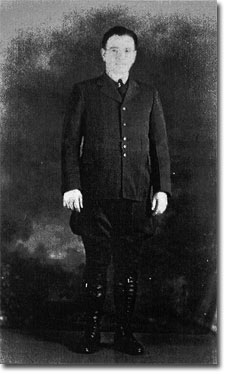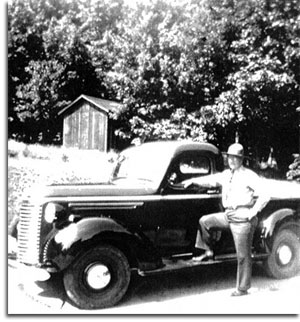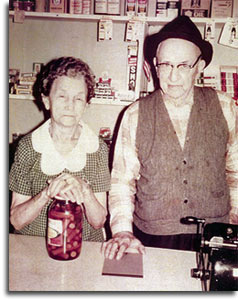Vagabonds Remembered for Work, but Loved Nature
By Francis Champ Zumbrun
Note: This is the seventh in a series of articles covering a time in the summer
of 1921 when Henry Ford, Thomas Edison, and Harvey Firestone camped for two
weeks in western Maryland. This article finds the Vagabonds, a term the wealthy
captains of industry called themselves when they camped together at “Camp
Harding” (along Licking Creek, about six miles east of Hancock, in Washington
County) where they stayed from July 21 to July 27, and at present day Swallow
Falls State Park, from July 27 to July 31. Question to consider (the answer is
at the end of the article): Beside the Vagabonds, what other famous people
thought western Maryland was a premier place to vacation?
“I want to give
the employees a Sunday [off] when everybody else has it. No man can work for
more than six days a week and keep it up. We have an eight hour day and a
six-day week…and as a result, the men are more careful and more interested [at
work].” - Henry Ford
Henry Ford made this comment at the Muddy Creek campsite to reporters
inquiring about the Detroit Toledo Ironton Railroad, purchased by Ford in 1920,
explaining why he reduced railroad freight rates, boosted wages of workmen, and
shutdown railroad operations on Sunday.
Several interesting stories survive that involve Henry Ford’s encounters with
Garrett County citizens concerning old sawmill steam boilers he saw during the
week he camped at Muddy Creek Falls.
 Carl
Lohr, well remembered as the first resident warden at Potomac State Forest,
experienced a chance encounter with the Vagabonds while he was attempting to
repair a broken axle on his father’s Model T Ford. On July 27, while traveling
to their Muddy Creek Falls campsite, the Vagabonds veered off from Oakland to
Deer Park where they ate a late lunch. Here, Henry Ford spotted an old sawmill
steam boiler.
Carl
Lohr, well remembered as the first resident warden at Potomac State Forest,
experienced a chance encounter with the Vagabonds while he was attempting to
repair a broken axle on his father’s Model T Ford. On July 27, while traveling
to their Muddy Creek Falls campsite, the Vagabonds veered off from Oakland to
Deer Park where they ate a late lunch. Here, Henry Ford spotted an old sawmill
steam boiler.
For a closer look, they drove up a winding narrow road that led to Lohr’s house.
Two men got out of the car. A man with a straw hat took out a writing pad and
began immediately drawing a sketch of the boiler.
Lohr walked up to the men and asked them who they were and what they were doing.
The man in the straw hat identified himself as Henry Ford; the older person
identified himself as Thomas Edison. Ford told Lohr: “I wanted to look at the
boiler because I have never seen anything like it before and especially because
it was something old. I have found there is much more to be learned from an old
thing than from a new one. You see, an old thing has been tried and has found to
be of service. A new thing is still an experiment and you can’t learn as much
from it.”
Lohr, extremely frustrated from trying for a week to repair without success his
father’s Model T Ford, said to Ford: “Since you made this car over here that
runs backward instead of forward…perhaps you could tell me about it.”
Lohr explained to Ford that he had replaced the right rear axle that connected
to the differential assembly after he nearly wrecked his father’s car due to a
brake failure; and that everytime Lohr pushed in the low gear and high gear
clutch, the rear wheels turned backward instead of forward, and when he pushed
in the reverse wheel clutch, the wheels spun forward instead of backward.
Ford responded: “Son, you have installed the ‘ring gear’ on the wrong side of the
pinion gear which causes the wheel to go backward instead of forward when you
push in the low gear clutch pedal.”
 Lohr, who in later years moved to LaVale, would tell this story and conclude it
this way: “…and so I was able to fix the car properly, and I became a factory
trained mechanic overnight from this bit of expert advice from Henry Ford.”
Lohr, who in later years moved to LaVale, would tell this story and conclude it
this way: “…and so I was able to fix the car properly, and I became a factory
trained mechanic overnight from this bit of expert advice from Henry Ford.”
In another account, apparently just before or after his encounter with Carl Lohr,
Ford’s Lincoln got stuck in the mud. Horses from a nearby farm had to pull him
out. A young boy, not knowing it was Ford, said: “Mister, you have the wrong
kind of car. My father drives a Ford and it never gets stuck in the mud.”
Ford was so delighted with the boy’s comment that he took the name and address
of his father, and soon thereafter, a brand new Ford was delivered to the boy’s
house.
Ford ended up buying two saw mill boilers during his visit at Muddy Creek Falls.
The historical accounts do not make it clear if it was same boiler he saw at
Deer Park when he talked to Carl Lohr. But it is known that he bought two
sawmill boilers from Newton Reams, who lived near Sang Run Road. The tale behind
this business transaction between Ford and Reams reveals good-old fashioned
Garrett County ingenuity.
Reams learned of Ford’s interest in his boiler and went to visit Ford at his
campsite. The transaction went something like this: Reams asked Ford, “You’re
not joking, you really want to buy my boiler?” Ford responded that it was true.
“O.K., I’ll sell it to you for 100 dollars,” replied Reams.
 Ford immediately gave Reams two fifty dollar bills. As Ford inspected the
engine, he explained to Reams how he could get it to run more efficiently. As he
looked closer, he noticed a part was missing. Ford asked Reams if he could find
a part to replace the missing one.
Ford immediately gave Reams two fifty dollar bills. As Ford inspected the
engine, he explained to Reams how he could get it to run more efficiently. As he
looked closer, he noticed a part was missing. Ford asked Reams if he could find
a part to replace the missing one.
Reams told Ford that he probably could get one from a nearby sawmill. The
sawmill operator later told Reams he wouldn’t sell him the part, but he would
sell the whole boiler to him for 75 dollars.
Reams soon thereafter contacted Ford and told him he had to buy the whole boiler
if he wanted the part. Ford asked Reams: “How much?” Reams inflated the price to
150 dollars. Ford immediately gave Reams three 50 dollar bills. Reams took the
two boilers to Oakland and shipped them by train to Dearborn, Michigan. Today,
both saw mill steam boilers are stored at the Henry Ford Museum in Michigan.
Answer to question: There are many celebrities who believe Western Maryland is a
great place to vacation including Albert Einstein, world famous scientist who
secretly vacationed at Deep Creek Lake for two weeks in September, 1946. He
later said that this vacation was “one of the most restful and zestful
vacations.” He stated that “here you can get nearer to God.” Also, in the 1940’s
and 1950’s, Dr. Benjamin Spock, the baby doctor, and his friend and companion
Dr. Jonas Salk, who developed the first safe polio vaccine, vacationed at Deep
Creek Lake in western Maryland.
Photographs:
Photographs of Carl Lohr provided by Offut Johnson
Newton Reams and his wife in their country store
Acknowledgements:
Retired Maryland State Forester Francis Champ Zumbrun, author, was the Manager of Green Ridge State Forest.
This is the seventh part of an occasional series about Thomas Edison,
Henry Ford and Harvey Firestone’s travels to Western Maryland,
originally published in the Cumberland Times News.
Back to Travelers Page